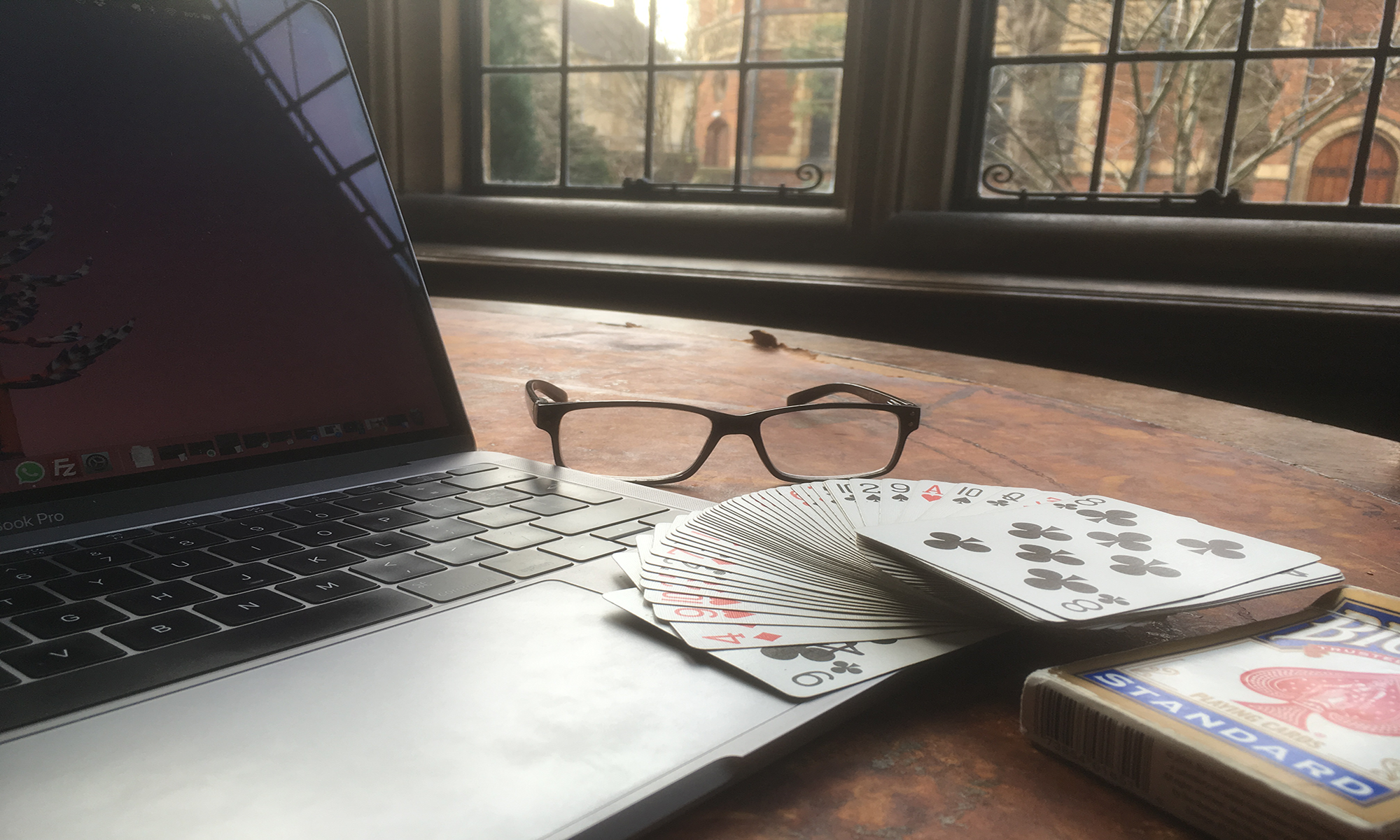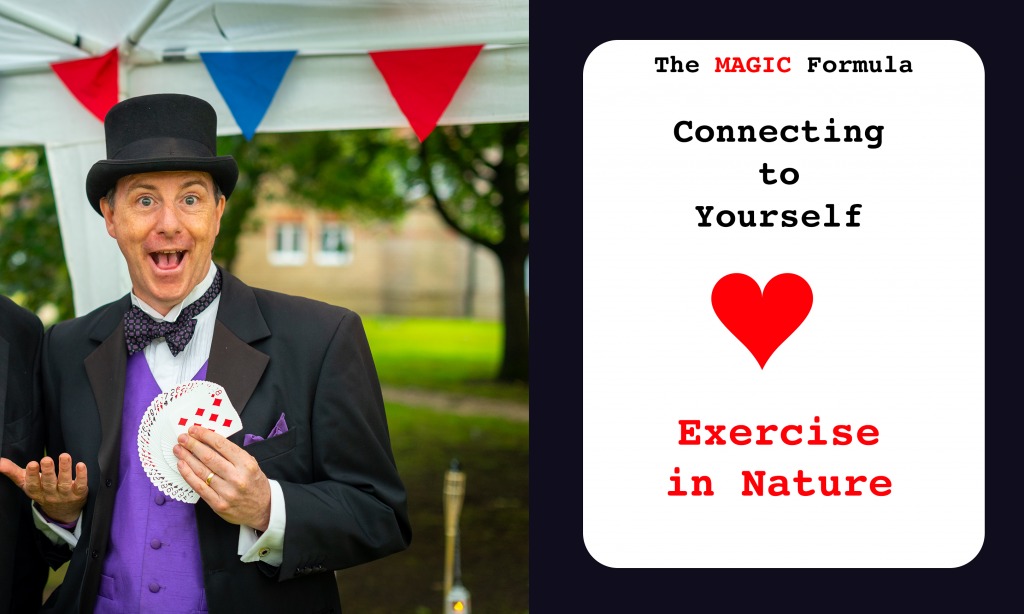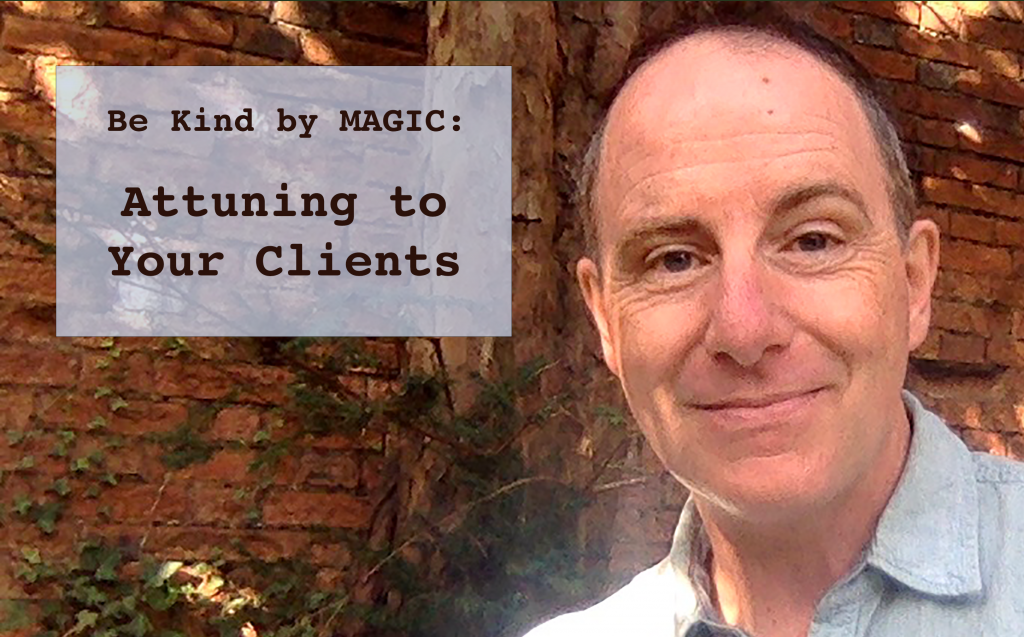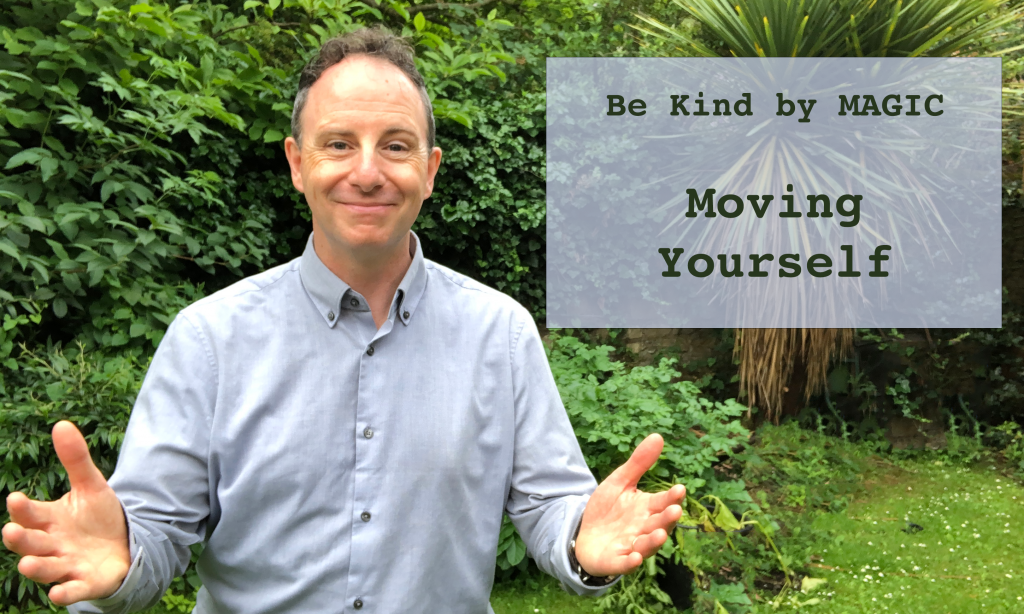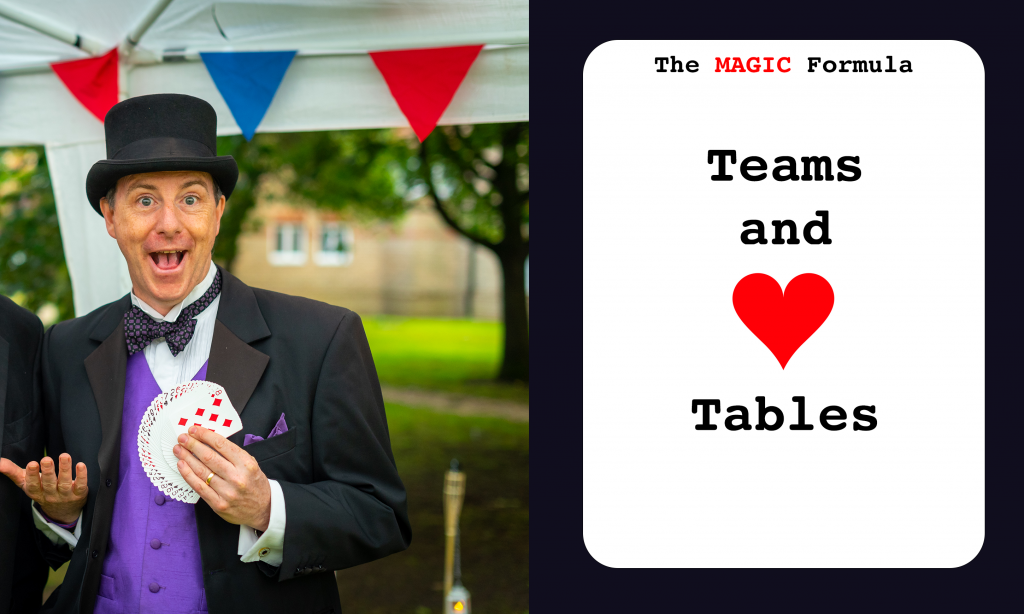
The MAGIC formula:
Moving
Attuning
Giving
Inspiring
Connecting
—
I have been working as a close-up magician for the last 25 years. I have entertained at thousands of events – hundreds of tables at weddings, corporate parties and significant birthdays.
At the same time, in the other half of my life, I have led and been a member of several teams. Recently, I have been interviewing many other team leaders about their experiences and challenges. Many thanks if you are one of them!
I have observed that many of the challenges facing a close-up magician approaching a table of guests are very similar to those facing team leaders. I have also realised that the MAGIC formula may be applied in both situations.
—
Tackling Timidity
I have nearly finished introducing all the people on my hypothetical table of wedding guests. There are just two left to meet: Timid Tina and Entitled Taramasalata.
Timid Tina doesn’t want to talk or be talked to, doesn’t want to be the focus of attention, says she doesn’t really like magic, that she would rather not take part. She is married to Joker Jake and is the mother of Enthusiastic Matilda and Bored Ben. She has ended up being seated next to Tarquin the Silverback, which is not where she would have chosen to be in a million years.
Why is Tina feeling nervous and reluctant to take part? Who knows? Maybe she has had a bad experience with a magician before? It could be that she was embarrassed at a birthday party or she saw something that offended her on TV. We magicians have to live with this; we are all tarred very quickly with the same brush. It is unfair, but that is the way it is.
Sideways Strategy
It doesn’t work to try to combat this directly. Believe me, I have tried. It is very tempting to think, “Ah, but I am different, I will change your mind and you will end up loving magic. The way that I will do it is to involve you in a magic trick against your will and therefore re-align your thoughts and feelings about magicians!” Never a good idea!
You have to go at it sideways, e.g., I might say, “No problem, that’s OK, magic is not for everyone. Do you mind if I do some tricks for the others and you just watch?” I have never experienced anyone saying no to that.
Then I would do my best to do a highly entertaining, non-threatening and uplifting job for the rest of the table. If I get it right, it will leave a positive impression of magicians on the previously magic-nervous Tina and will go some way to rehabilitating the profession in her mind.
Useless Theories
Maybe her reticence has nothing to do with magic? It could be that she had a parent who was always over-the-top gregarious in social situations, and she always found them intensely embarrassing when she was a child. Now she avoids being the centre of attention because she does not want to be perceived like that herself.
Or it could be any number of other reasons. The critical thing is, I don’t know, and there is no way I will find out in the few minutes I have at the wedding table. She may not even know the reason herself! Of course, I can have my theories, but they are not actually that useful. The only thing I can do in the moment is to respect her stated position, be sensitive and do my job as well as I possibly can. That way, I can’t make the situation worse for her, and I may well make it better.
Gently, Gently…
It is the same when you are a team leader. You may have a quiet team member who doesn’t want to engage in team meetings. There will be little gained, and probably much lost, by forcing them to contribute against their will. As with many of the personalities that we find a challenge, much can be achieved by getting alongside them outside of team meetings, establishing rapport and getting to know them one-to-one.
If you can help your team member to feel valued as they are and not under any pressure to contribute in the same way as other more extroverted colleagues, then the chances are that they will begin to feel more comfortable. Once this starts, you may see some of their nervousness falling away, and you may notice them contributing more. This is unlikely to be a fast process; it needs to be done steadily and gently.
Different Maps
As with any of the personalities that we may have on a wedding table or a team, it is helpful to realise and remember that no two people think, perceive the world or navigate their way through life in the same way. We all have our own maps of the world, and they can differ wildly.
As a magician and team leader, I have to remember that I am there to serve, whether it be my audience or my team. I need to be humble enough to realise that I don’t have all the answers, that they will have different understandings and approaches to me, and that all I can do is influence. Nonetheless, it is possible to get everyone pulling together in the same direction to achieve a desired result.
Maybe with Tina more than any of the other characters on the table, it is a case of much more carrot than stick? She may be the quietest, but she quite possibly presents the most significant challenge.
Do you have a Timid Tina on your team?
How can you best serve them?
—
Help Please!
I am currently adding to my coaching toolkit by undergoing some NLP Coaching training. As part of the course, I need to practise my new techniques on willing volunteers.
The research involves a 30-minute Zoom call. I get some practice and you get some free coaching: win-win! Thank you to those who have already done it – much appreciated! Please let me know if you would like to do some more.
Please pass this on to anyone that you know might enjoy or benefit from it.
If you would like to help, please book in here:
https://www.work-life-magic.com/free-coaching/
